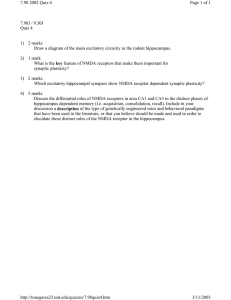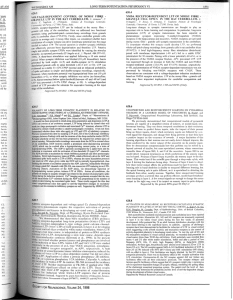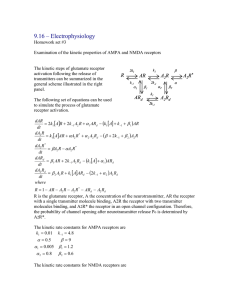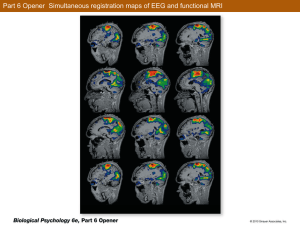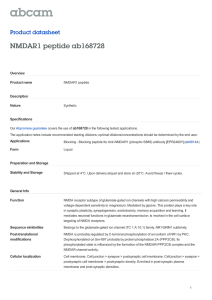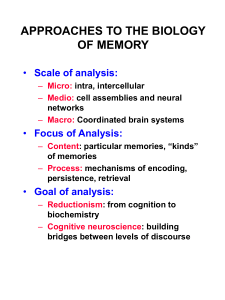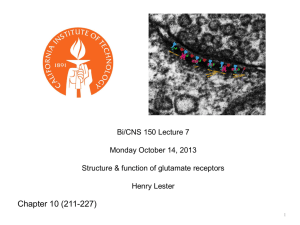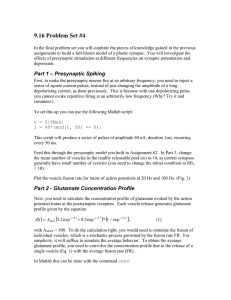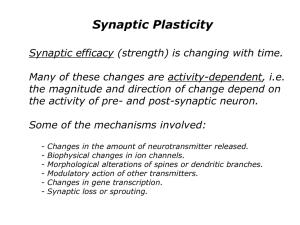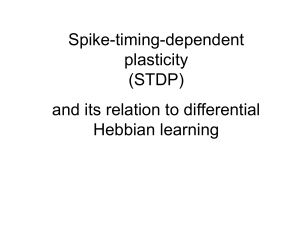LTP: a three step process involving specific signalling pathways and... Induction of LTP involves NMDA receptors
advertisement
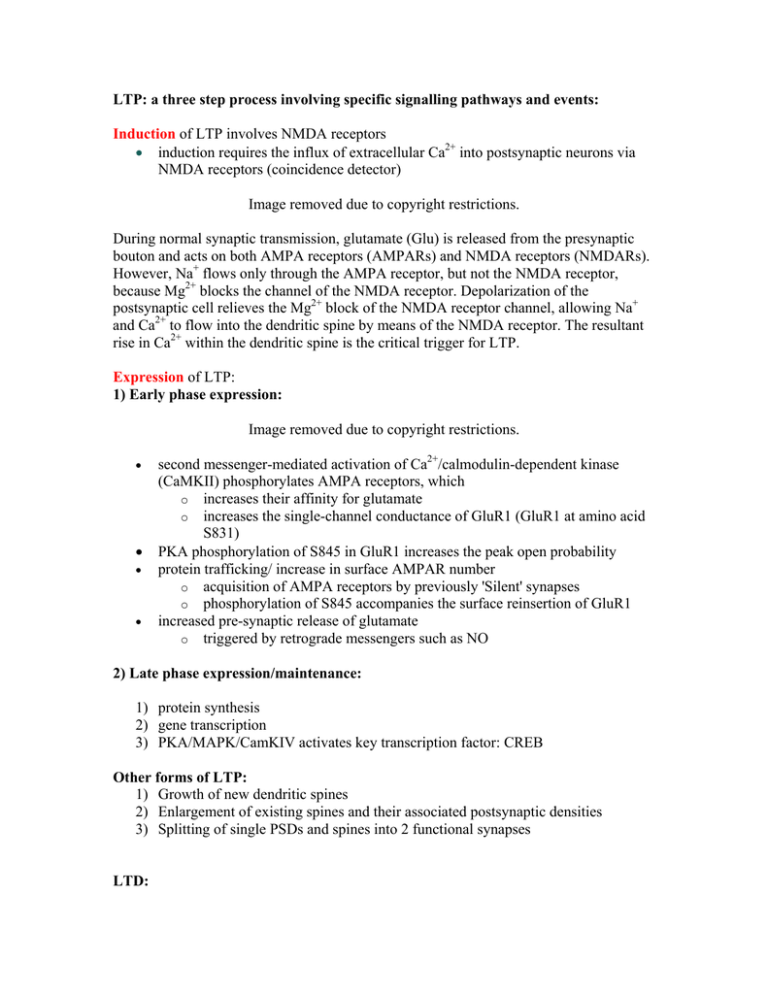
LTP: a three step process involving specific signalling pathways and events: Induction of LTP involves NMDA receptors • induction requires the influx of extracellular Ca2+ into postsynaptic neurons via NMDA receptors (coincidence detector) Image removed due to copyright restrictions. During normal synaptic transmission, glutamate (Glu) is released from the presynaptic bouton and acts on both AMPA receptors (AMPARs) and NMDA receptors (NMDARs). However, Na+ flows only through the AMPA receptor, but not the NMDA receptor, because Mg2+ blocks the channel of the NMDA receptor. Depolarization of the postsynaptic cell relieves the Mg2+ block of the NMDA receptor channel, allowing Na+ and Ca2+ to flow into the dendritic spine by means of the NMDA receptor. The resultant rise in Ca2+ within the dendritic spine is the critical trigger for LTP. Expression of LTP: 1) Early phase expression: Image removed due to copyright restrictions. • • • • second messenger-mediated activation of Ca2+/calmodulin-dependent kinase (CaMKII) phosphorylates AMPA receptors, which o increases their affinity for glutamate o increases the single-channel conductance of GluR1 (GluR1 at amino acid S831) PKA phosphorylation of S845 in GluR1 increases the peak open probability protein trafficking/ increase in surface AMPAR number o acquisition of AMPA receptors by previously 'Silent' synapses o phosphorylation of S845 accompanies the surface reinsertion of GluR1 increased pre-synaptic release of glutamate o triggered by retrograde messengers such as NO 2) Late phase expression/maintenance: 1) protein synthesis 2) gene transcription 3) PKA/MAPK/CamKIV activates key transcription factor: CREB Other forms of LTP: 1) Growth of new dendritic spines 2) Enlargement of existing spines and their associated postsynaptic densities 3) Splitting of single PSDs and spines into 2 functional synapses LTD: Induction: requires activation of NMDARs, a rise in postsynaptic calcium ion concentration, and activation of a serine-threonine protein phosphatase cascade Image removed due to copyright restrictions. Expression: 1) GluR1 s845 dephosphorylation (PKA site) by PP1 2) LTD induction in previously potentiated synapses leads to dephosphorylation of the CaMKII site, S831 3) GluR2 regulated receptor endocytosis via a dynamin- and clathrin-dependent mechanism 4) Lost of “slot protein”, PSD 95 5) NMDAR activation leads to ubiquitination and proteasome degradation of PSD95 Image removed due to copyright restrictions. Maintenance: • requires protein synthesis for stable expression • translation of preexisting mRNA Other forms of LTP: 1) Elimination of dendritic spines 2) Shrinkage of existing spines
